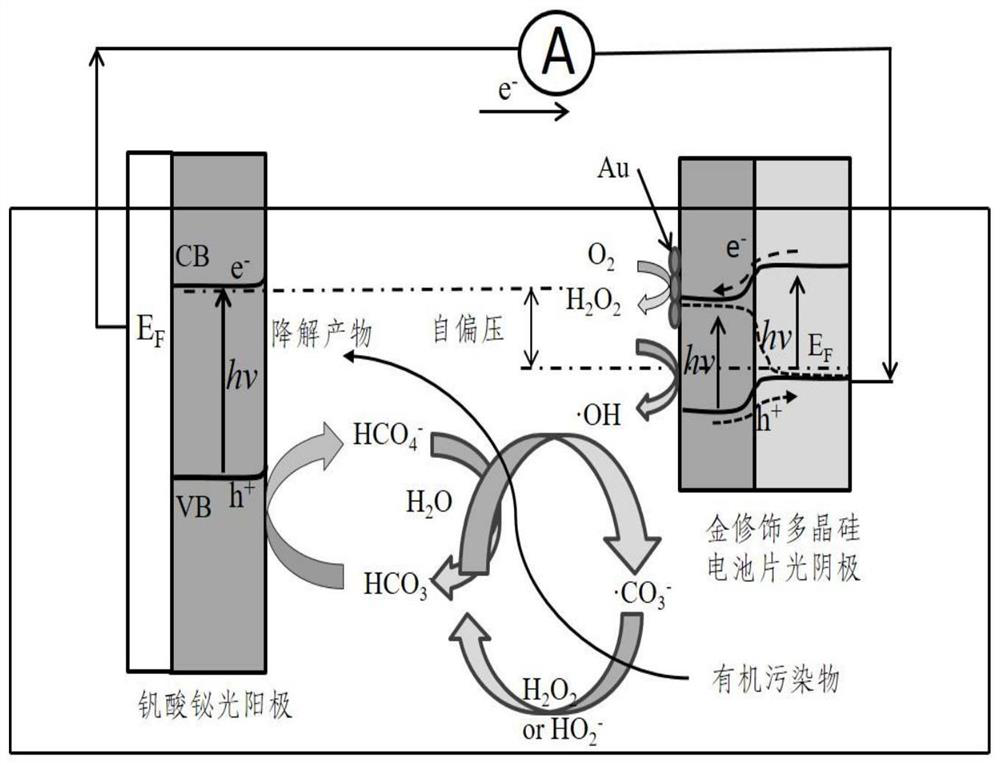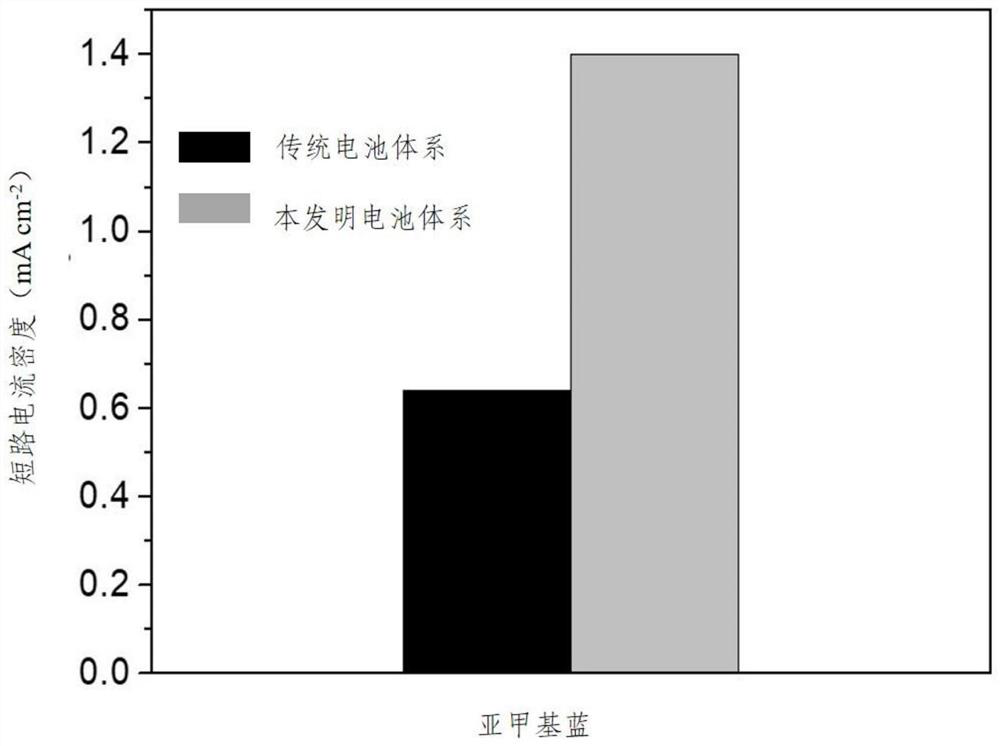Carbonate radical photocatalytic wastewater power generation method
A free radical and carbonate technology, applied in the field of carbonate radical photocatalytic wastewater power generation, can solve the problems affecting the efficiency of photocatalytic wastewater fuel cells, limiting the active concentration of hydroxyl radicals, etc.
- Summary
- Abstract
- Description
- Claims
- Application Information
AI Technical Summary
Problems solved by technology
Method used
Image
Examples
Embodiment 1
[0029] This embodiment includes the following steps:
[0030] Step 1) Specific preparation of the photoanode: 0.4M KI is dissolved in 50mL deionized water, the pH is adjusted to 1.7 with 1M nitric acid, then 0.04M bismuth nitrate is dissolved in it, followed by dissolving 0.23M p-benzoquinone Pour 20mL of ethanol solution into it, stir well and set aside. Use the Ag / AgCl electrode as the reference electrode, platinum as the counter electrode, and the cleaned FTO as the working electrode, put it into the above solution, and then deposit the BiOI film at a constant potential -0.1V for 15 minutes, then wash and dry the film stand-by. Then configure 0.2M vanadyl acetylacetonate DMSO solution, add it dropwise on the above film, and then soak it in 1M NaOH for 30 minutes after calcining at 450°C.
[0031] Step 2) Concrete preparation of the photocathode: prepared by the method of photoelectric deposition, the specific method is as follows: with a commercially available silicon bat...
Embodiment 2
[0036] Compared with Example 1, in this example, the concentration of bicarbonate is reduced to 0.05M, and at the same time, 0.05M sodium sulfate is supplemented to maintain the electrolyte concentration required for conduction. After 120 minutes, the removal rate of methylene blue can reach 85.6%. The short-circuit current density can reach 1.36mA / cm 2 .
Embodiment 3
[0038] Compared with Example 1, in this example, the pH of the organic wastewater is adjusted to 6.2, the removal rate of methylene blue can reach 65.8% after 120 minutes, and the short-circuit current density of the external output can reach 0.95mA / cm 2 .
PUM
 Login to View More
Login to View More Abstract
Description
Claims
Application Information
 Login to View More
Login to View More - R&D
- Intellectual Property
- Life Sciences
- Materials
- Tech Scout
- Unparalleled Data Quality
- Higher Quality Content
- 60% Fewer Hallucinations
Browse by: Latest US Patents, China's latest patents, Technical Efficacy Thesaurus, Application Domain, Technology Topic, Popular Technical Reports.
© 2025 PatSnap. All rights reserved.Legal|Privacy policy|Modern Slavery Act Transparency Statement|Sitemap|About US| Contact US: help@patsnap.com



